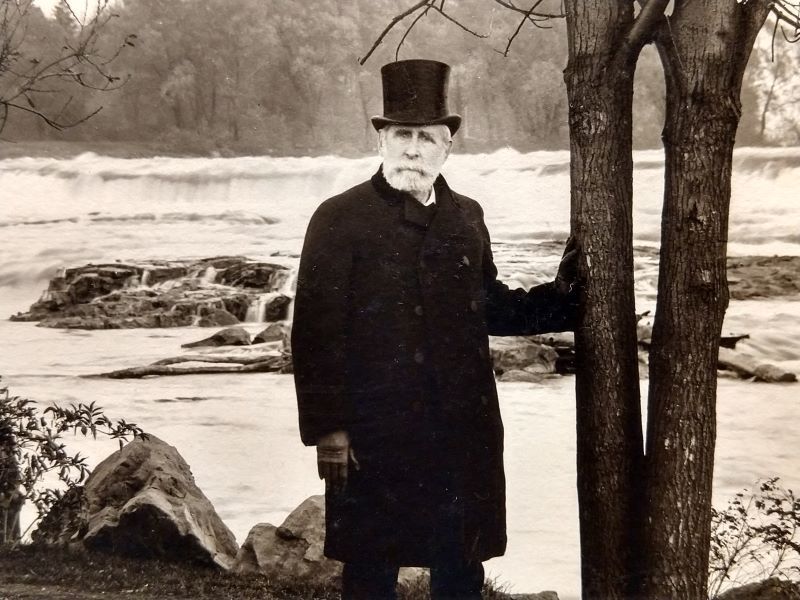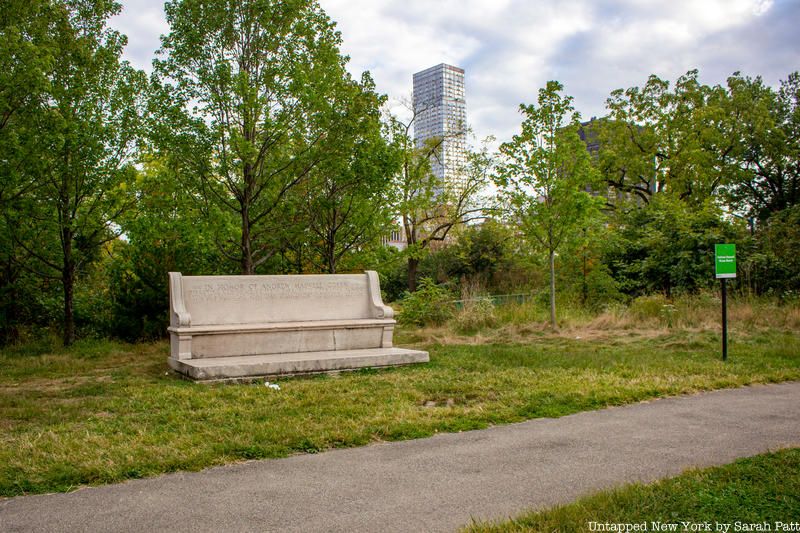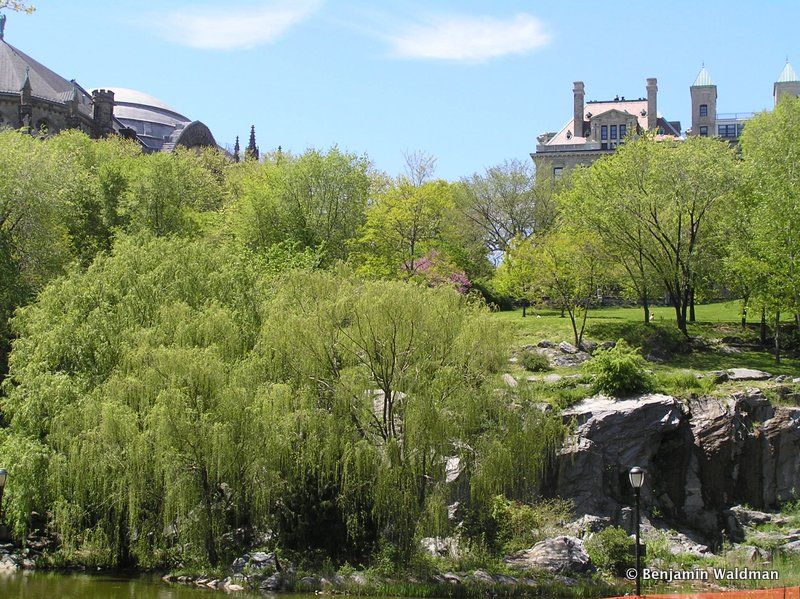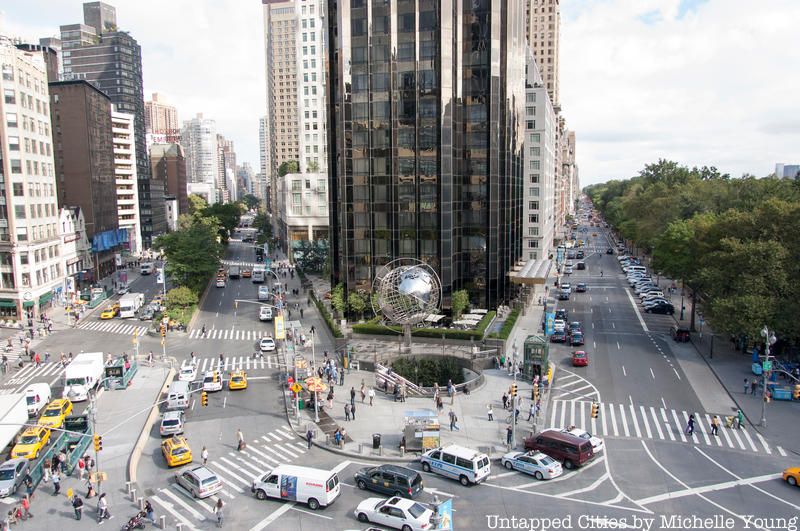Last-Minute NYC Holiday Gift Guide 🎁
We’ve created a holiday gift guide with presents for the intrepid New Yorker that should arrive just in time—


Andrew Haswell Green, born on October 6, 1820 in Worcester, Massachusetts, was the unsung hero of Central Park‘s creation. Yet you might be thinking, “Didn’t Frederick Law Olmsted and Calvert Vaux create Central Park?” While the duo was responsible for much of the planning, Andrew Haswell Green was the comptroller of the Central Park Commission and was the behind-the-scenes influencer who led to the selection of their Greensward Plan — which notably did not include the Sheep Meadow, Belvedere Castle, and McGowan’s Pass. He eventually became the comptroller of all of New York City and would straighten out the finances following the corrupt years of Boss Tweed. Historian Kenneth T. Jackson, editor of The Encyclopedia of New York City. dubs Green “arguably the most important leader in Gotham’s long history.”

While mostly forgotten today for his role in Central Park, Green was still very much in the mind of New Yorkers in 1929, when a bench was dedicated to him at the top of his namesake hill. This was the site of the former Mount Saint Vincent Academy, the first institution for higher learning for women in New York. The granite bench is inscribed with the words: “In honor of Andrew Haswell Green. Directing genius of Central Park in its formative period. Father of Greater New York, this eminence was named Andrew H. Green Hill. These five symbolical trees were planted and this seat was here erected.” Not mentioned is the resentment that Olmsted and Vaux eventually felt under Green’s control, but the end product is the Central Park still beloved today.
Historians who are familiar with Green’s career often compare him to Robert Moses. Yet, unlike Moses, Green’s name usually evokes a shrug, even from well-informed New Yorkers. For over 20 years, former Manhattan Borough Historian Michael Miscione has been working to change that. On August 4th, Miscione will present an hour-long illustrated talk about Green, featuring rare images, documents, and even music.
On the talk, learn how Central Park, the Metropolitan Museum of Art, the American Museum of Natural History, the New York Public Library, and the Wildlife Conservation Society (with its Bronx Zoo) owe their existence in large part to Green. Learn how Green masterminded the 1898 consolidation of the five boroughs, a measure that expanded the city’s size five-fold and earned him the nickname “The Father of Greater New York.” Hear the musical anthem that rallied Brooklynites to oppose the consolidation movement, or as they called it, “Green’s hobby.” Learn how Green unified and formalized New York’s early historic preservation movement 60 years before the epic battle to save Penn Station made the term “preservationist” fashionable. And hear about Green’s shocking and mysterious death. The event is free for Untapped New York Insiders (and get your first month free with code JOINUS).

Andrew Haswell Green: Unsung Civic Hero
Michael Miscione served as the Manhattan Borough Historian from 2006 to 2019. He is a native New Yorker, a professional tour guide, and a historical activist. He is well known for his ongoing efforts to secure recognition for Green. He has given lectures and interviews about the man, and every year he presides over a tribute ceremony for Green at the Green Memorial Bench in Central Park. Thanks largely to Miscione’s efforts, the NYC Parks Department has named a Manhattan park for Green at East 61 Street and the East River.

In the 1980s, the bench in honor of Green was moved across the way on East Drive opposite 104th Street to make way for a composting operation and in 1998 five new trees were planted around it. Even more recently, a NYC Parks sign was erected in front of the bench.
The Central Park Commission, which existed from 1857 to 1871, took on many more public works projects beyond Central Park. With Green at the helm, it went on to create Riverside Park, Fort Washington Park, Morningside Park, the American Museum of Natural History, and the Metropolitan Museum of Art. The Central Park Commission was also involved in various street improvement projects, including the widening of Broadway, the laying of the street grid above 155th Street, and the creation of Columbus Circle. Green also contributed to the creation of the Bronx Zoo and the New York Public Library, with funds from the estate of Samuel J. Tilden, a one-time U.S. Presidential candidate and lawyer. Green’s career closely dovetailed with that of Tilden, whose home in Gramercy Park is now the National Arts Club.

Though trained as a lawyer, Green became New York City’s first “comprehensive urban planner,” according to historian David Hammack. NYC Parks writes that Green also “provided the driving force behind the movement to consolidate the City into five boroughs,“ the feat which gave him the nickname “Father of Greater New York.”
In the book Broadway: A History of New York City in Thirteen Miles, historian Fran Leadon writes that Green was only legally obligated to follow the original Bloomingdale Road (which became Broadway) up to 86th Street: He wrote, “North of that line, they could open the new avenue anywhere they pleased and so they decided to plow straight north and abandoned the Bloomingdale Road which gradually fell into disuse.” Green had a planner’s stratagems and an architect’s vision. Leadon writes that Green, “not lacking in taste or or enterprise, imagined the Boulevard [Broadway] running through a picturesque suburban landscape.” The lush malls on Broadway north of Columbus Circle emerged from Green’s view of what a new Broadway could look like.

Green’s life came to a tragic end at the age of 83 when he was shot while about to enter his townhouse at No. 91 Park Avenue (at 40th Street) to have lunch with his family. It was a case of mistaken identity, though. A Cornelius Williams thought Green was the man having an affair with a woman with whom Williams was romantically involved. Before Green was shot five times by Williams, a conversation allegedly took place between the two in which Green denied knowing Williams. Williams, a Black man, was deemed psychotic and sent to a mental institution. The investigation and trial thrilled the city in 1903, like many other high-society love triangle murders. Architect Stanford White would be murdered just three years later in a similar “crime of passion.”
A memorial ceremony for Green was attended by New York City Mayor Seth Low, who said the event was “a grateful recognition of the obligation under which [Green] laid the city by many services during his long life.” Discussion during the event revolved around the creation of a permanent memorial to Green — one idea was the creation of a parkway to be called the “Andrew Haswell Green Boundary Road,” which would stretch from the Hudson River to the Long Island Sound. In 2001, Miscione proposed to rename the Washington Bridge, which Green first suggested, in his honor. In fact, Miscione is one of the primary reasons Green is mentioned at all in modern urban discourse.

Miscione tells us about his more than two decade fascination with Andrew Haswell Green, which started when he was researching the consolidation of New York for a documentary: “Here was this guy who was not only the visionary behind the consolidation scheme, but he was a driving force behind all these other monumental initiatives… He planned the street grid above 155th Street, and redesigned the grid of the Upper West Side. He organized and formalized the city’s historic preservation movement decades before the fights for Penn Station and Grand Central.”
Miscione continues, “So here was this guy who did so much, and no one had ever heard of him! (To add insult to injury, he was shot to death at age 83! A guy like Green deserves to die in bed.) I figured, Andrew Green needs a friend, and I’ll be that friend. That’s when I decided to raise awareness for him. I’ve been at it for about 20 years, with talks, tours, articles, ceremonies, and interviews. I think I have been somewhat successful. There’s a new park named for him on the East Side. Historians and tour guides don’t look at me quizzically as much as they used to when I drop his name. And he is mentioned in history books and other writings a lot more often than he used to be.”
Last year on the 200th anniversary of his birth, Miscione documented the many sites “connected to Green’s life and career as a master planner, reformer, and preservationist.” Some sites affiliated with Green include Andrew Haswell Green Park, along the East River under the Queensboro Bridge, which features a roller-coaster looking art installation by Alice Aycock, a cocktail bar in the Theater District called Haswell Green’s at 240 W 52nd St., and the many institutions formed under Green’s direction.
On August 4th, Miscione will present an hour-long illustrated talk about Green, featuring rare images, documents, and even music. The event is free for Untapped New York Insiders (and get your first month free with code JOINUS).

Andrew Haswell Green: Unsung Civic Hero
Next, check out 7 Features of NYC’s Central Park That Weren’t in the Original Plan!
Subscribe to our newsletter